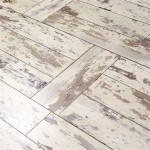Which Direction Should I Install My Laminate Flooring?
Determining the optimal direction for laminate flooring installation is a crucial decision that impacts the aesthetic appeal and perceived spaciousness of a room. While personal preference plays a significant role, understanding the underlying principles of visual perception and room geometry can guide the selection process and contribute to a more balanced and harmonious interior design.
Laminate flooring, a popular alternative to hardwood, offers durability, affordability, and relatively easy installation. However, unlike hardwood, which often features more pronounced grain patterns that naturally dictate direction, laminate flooring can present a more ambiguous choice. Therefore, careful consideration of factors beyond mere aesthetics is essential.
Light source, room dimensions, and existing architectural features all play a role in determining the most suitable direction for laying laminate flooring. A well-informed decision can enhance the overall visual impact of the flooring and create a more visually pleasing and functional space.
Following the Primary Light Source
One of the most common and generally recommended approaches is to install laminate flooring parallel to the primary light source. This typically means aligning the planks with the longest wall containing the most significant windows or sources of natural light. The rationale behind this practice lies in how light interacts with the flooring surface.
When light falls along the length of the planks, it tends to accentuate their texture and grain, creating a smoother and more uniform appearance. This minimizes the visibility of seams and imperfections, resulting in a cleaner and more polished look. Conversely, if light falls perpendicular to the planks, it can highlight any inconsistencies in the surface, making seams more apparent and potentially creating a choppy or fragmented visual effect.
Consider a room with a large picture window along one wall. Installing the laminate flooring parallel to this wall will allow the light to cascade smoothly across the planks, creating a sense of depth and continuity. This approach is particularly beneficial in rooms with significant natural light, as it maximizes the brightening effect and enhances the overall ambiance.
For rooms with multiple prominent windows on different walls, determining the primary light source may require a more subjective assessment. In such cases, consider the direction from which the most consistent and intense light enters the room. This might involve observing the light patterns throughout the day to identify the dominant source.
In situations where consistent light sources are problematic, such as rooms with minimal natural light, it is advisable to consider other factors, such as room dimensions, to determine the optimal orientation of the laminate flooring.
Utilizing Room Dimensions to Create a Visual Illusion
Another key consideration is the room's dimensions and shape. The direction in which laminate flooring is installed can significantly impact the perceived size and proportions of a room. Running the planks lengthwise in a narrow room can visually lengthen it, creating a more spacious feel. Conversely, running the planks across the width of a narrow room can make it appear wider and more balanced.
This principle is based on the fundamental concept of visual perspective. The human eye tends to follow lines and patterns, and the direction of the flooring planks can guide the eye's movement through the space. By strategically aligning the planks, it is possible to manipulate the perceived dimensions of the room and create a more aesthetically pleasing and harmonious environment.
For example, in a long, narrow hallway, installing the laminate flooring lengthwise will visually elongate the space, making it feel less cramped and more inviting. Conversely, in a square room, the direction of the planks may have less of a pronounced effect on the perceived dimensions. In such cases, other factors, such as the light source or existing architectural features, may take precedence.
It is important to note that the effectiveness of this technique depends on the extent of the dimensional imbalance. In rooms that are only slightly narrow or long, the impact of the flooring direction may be subtle. However, in rooms with more extreme proportions, the visual effect can be quite dramatic.
When considering room dimensions, it is also essential to account for any existing architectural features, such as doorways, archways, or built-in furniture. The flooring direction should ideally complement these features and contribute to a cohesive and balanced design.
Aligning with Existing Architectural Features
Existing architectural features, such as doorways, hallways, and transitions between rooms, can also influence the optimal direction for laminate flooring installation. Maintaining a consistent direction throughout connected spaces can create a sense of continuity and flow, enhancing the overall visual coherence of the home.
For instance, if a hallway leads directly into a living room, it is often advisable to install the laminate flooring in the same direction in both spaces. This creates a seamless transition between the two areas, making the home feel more unified and spacious. Abrupt changes in flooring direction can be visually jarring and disrupt the flow of the space.
Similarly, when installing laminate flooring in multiple rooms on the same floor, it is generally recommended to maintain a consistent direction throughout. This is particularly important in open-concept layouts, where the rooms are visually interconnected. A consistent flooring direction can help to define the different zones within the open space while maintaining a sense of overall harmony.
However, there may be situations where deviating from this principle is necessary or desirable. For example, if a doorway is significantly off-center in a room, aligning the flooring with the doorway may create an awkward or unbalanced visual effect. In such cases, it may be preferable to prioritize the light source or room dimensions, even if it means a slight discontinuity in the flooring direction.
When transitioning between different flooring types, such as from laminate to tile or carpet, it is crucial to use appropriate transition strips to create a smooth and visually appealing connection. These transition strips can help to bridge the gap between the different flooring materials and minimize the risk of tripping hazards.
Ultimately, the decision of which direction to install the laminate flooring should be based on a careful assessment of the room's specific characteristics and the desired aesthetic outcome. There is no one-size-fits-all answer, and it may be necessary to experiment with different layouts to find the most visually pleasing and functional solution.
It is also worthwhile to note that some laminate flooring manufacturers recommend a specific installation direction based on the design and construction of their products. Consulting the manufacturer's instructions is always advisable to ensure proper installation and optimal performance.
Professional flooring installers can offer valuable insight and guidance in determining the most appropriate direction for laminate flooring installation. Their experience and expertise can help to ensure a successful and visually appealing outcome.

Determining The Direction To Lay Install Hardwood Laminate Or Luxury Vinyl Plank Flooring

Flooring Direction Which Way Is Best Garrison Collection

How To Install Laminate Flooring The Home Depot

Installing Laminate Flooring In Hallways Do It Yourself

Choosing Which Direction To Lay Vinyl Plank Flooring Install Today Reallyfloors America S Est Hardwood

Laminate Floor Installation For Beginners 9 Clever Tips

How To Lay Laminate Flooring 13 Steps With S Wikihow

How To Install Laminate Flooring The Home Depot

Which Direction To Lay Your Hardwood Flooring Riterug

How To Determine Which Direction Install Vinyl Plank Flooring
Related Posts








